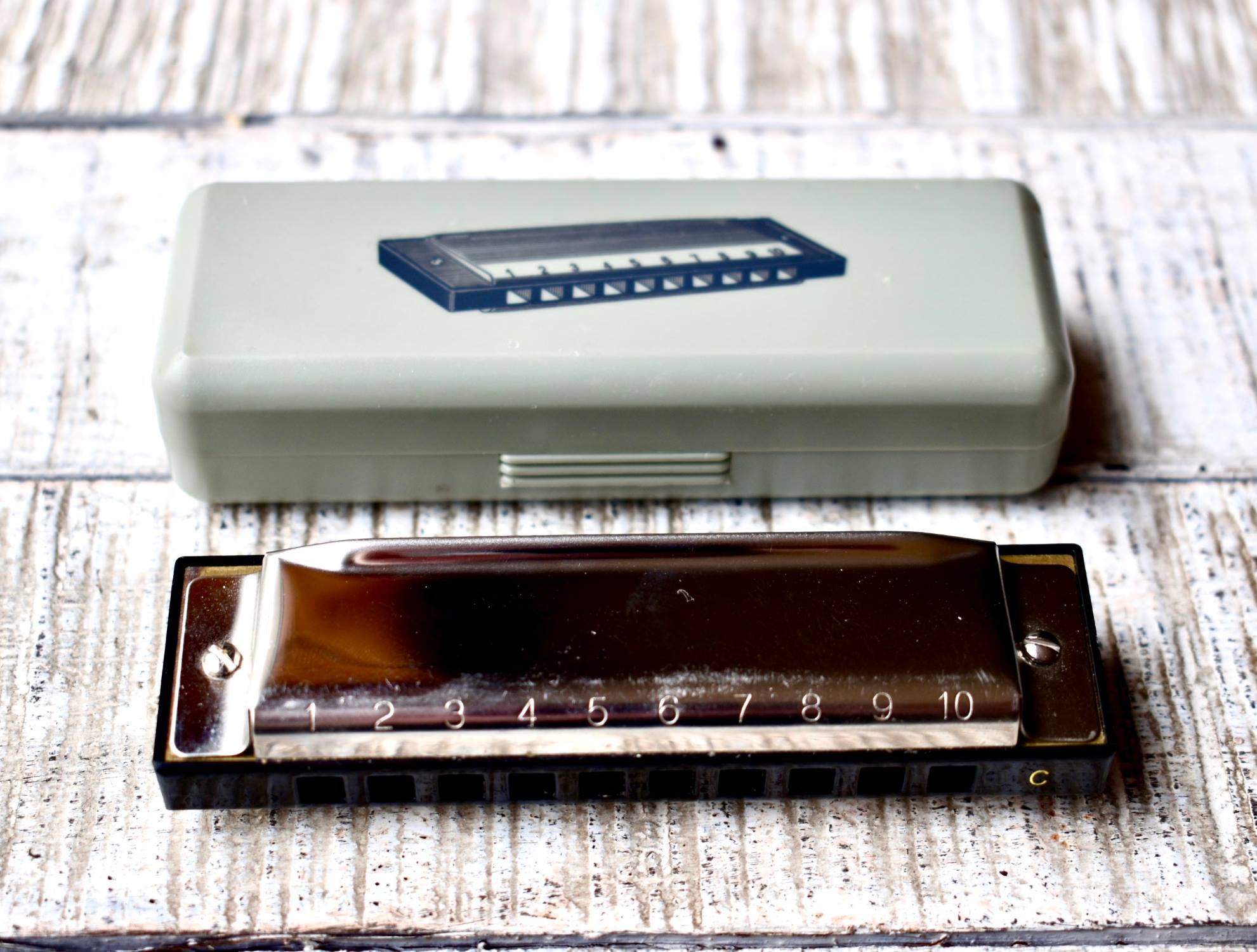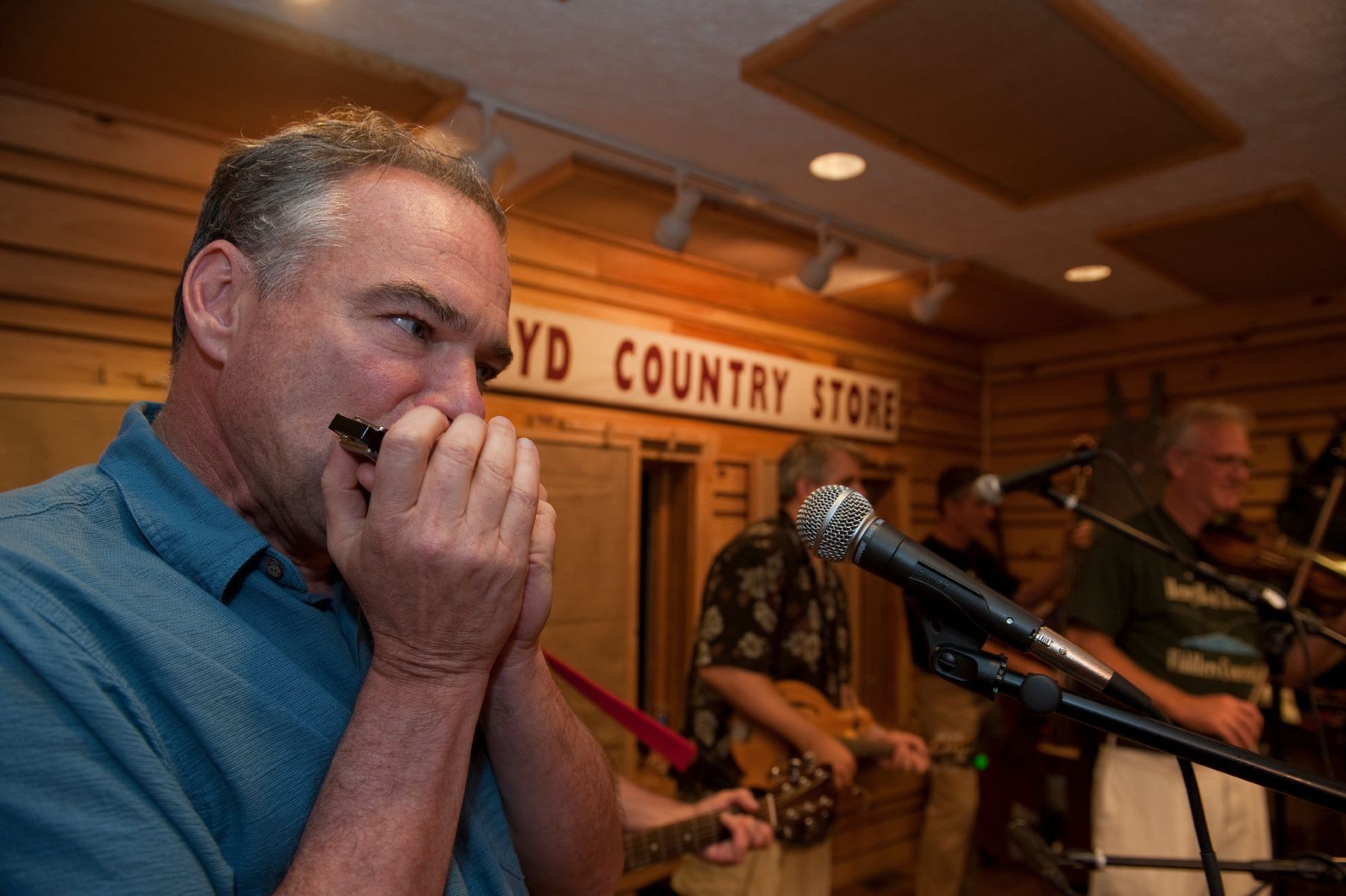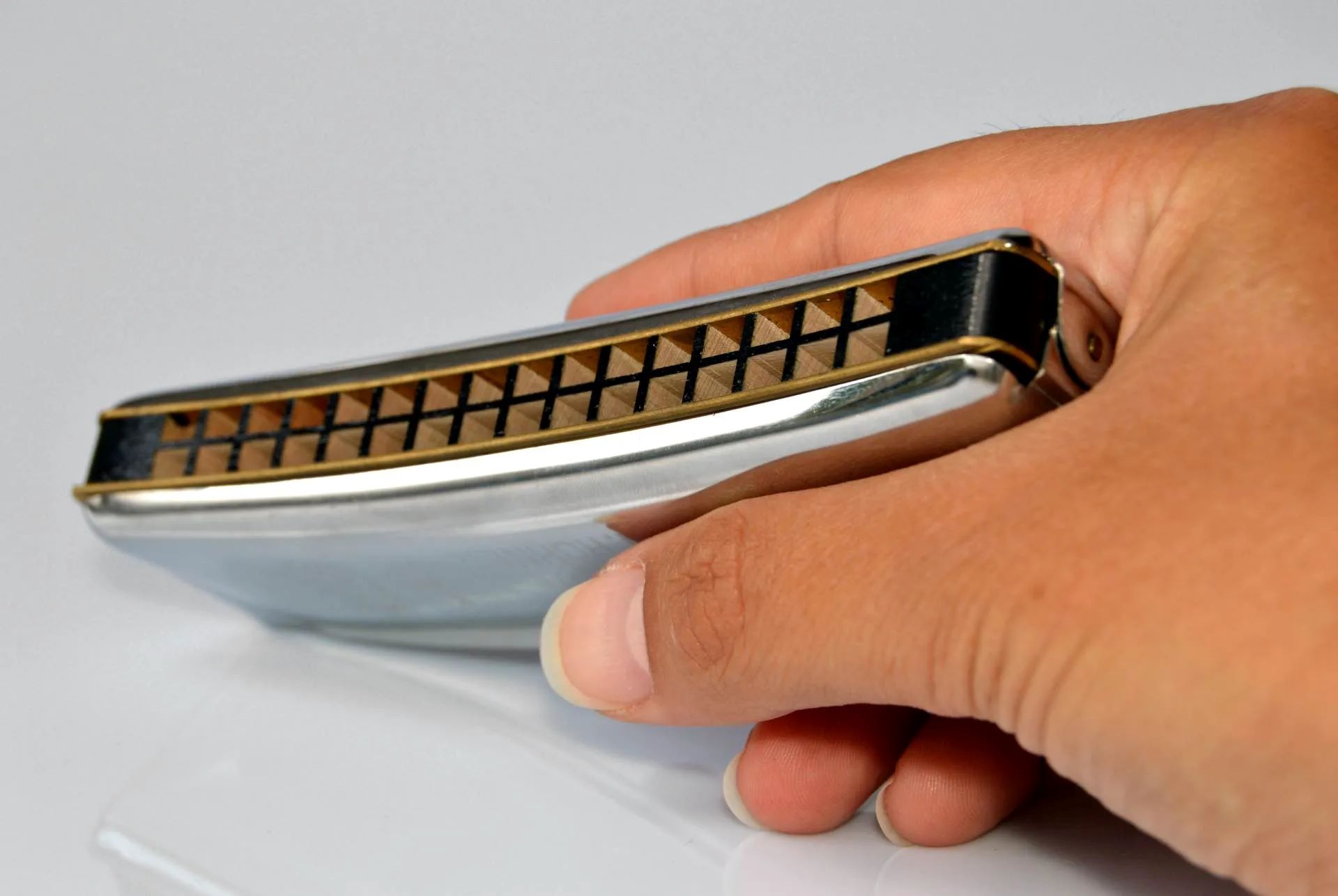Home>Instruments>Harmonica>How To Bend A Note On Harmonica


Harmonica
How To Bend A Note On Harmonica
Modified: February 3, 2024
Learn how to bend notes on harmonica with our step-by-step guide. Master the art of manipulating the sound of your harmonica to create soulful melodies and expressive solos.
(Many of the links in this article redirect to a specific reviewed product. Your purchase of these products through affiliate links helps to generate commission for AudioLover.com, at no extra cost. Learn more)
Table of Contents
Introduction
When it comes to musical instruments, the harmonica holds a special place in the hearts of many. Its soulful sound and portability make it a popular choice for musicians and enthusiasts alike. One of the defining characteristics of the harmonica is the ability to bend notes, which adds a unique flavor and expressiveness to the music.
Bending a note on the harmonica involves altering the pitch of a note either by lowering or raising it. This dynamic technique allows the player to infuse emotions and create nuanced melodies. However, mastering the art of bending requires practice, patience, and a solid understanding of the instrument.
In this article, we will delve into the world of bending notes on the harmonica. We will explore various bending techniques, provide exercises to enhance your bending skills, and troubleshoot common issues that may arise. Whether you are a beginner or an experienced player looking to refine your technique, this guide will provide you with the tools and knowledge you need to master the art of bending on the harmonica.
Before we dive into the techniques, it’s important to ensure you have a harmonica that is suitable for bending. Most commonly, players opt for a diatonic harmonica, which is designed specifically for bending. These harmonicas consist of multiple holes, each with a reed that produces a different pitch. Look for a diatonic harmonica in the key of C, as it is the most commonly used key for beginners and is versatile for playing a wide range of music genres.
Now that we have a basic understanding of what bending involves and have the appropriate harmonica in hand, let’s begin our journey to unlocking the captivating world of bent notes on the harmonica!
Understanding Bending on the Harmonica
Bending notes on the harmonica is a technique that allows the player to alter the pitch of a note, adding a touch of expression and emotion to their playing. It is a fundamental skill that distinguishes the harmonica from other instruments and opens up a world of musical possibilities.
The pitch alteration in bending is achieved by manipulating the airflow and resonance within the harmonica. When you play a note on a harmonica, the air from your breath passes over a reed, causing it to vibrate and produce sound. Bending the note involves altering the air pressure and shape of your mouth cavity to affect the vibration of the reed and consequently change the pitch.
There are two types of bends commonly used on the harmonica: the draw bend and the blow bend. The draw bend involves reducing the pitch of a note played on the inhale (drawing air into the harmonica), while the blow bend lowers the pitch of a note played on the exhale (blowing air out of the harmonica).
Each hole on the harmonica has multiple reeds, and bending can be accomplished by selectively drawing or blowing air through specific reeds with precise control. The technique requires finesse and coordination between the airflow, tongue positioning, and the shape of the mouth cavity.
It’s important to note that not all harmonicas are created equal when it comes to bending. Some harmonicas are more responsive to bending due to variations in their reed design and construction. Therefore, it’s advisable to experiment with different harmonica brands and models to find the one that best suits your bending preferences and playing style.
Understanding the physics of bending notes on the harmonica is essential, but it is through practice and experimentation that you will truly grasp the intricacies of this technique. As you progress, you’ll discover the sweet spots on your harmonica where bending feels natural and effortless, enabling you to express your musical ideas more effectively.
Now that we have a solid understanding of the concept behind bending on the harmonica, let’s delve into the techniques and exercises that will help you develop and refine this captivating skill.
Preparing for Bending
Before you dive into practicing bending techniques on the harmonica, it’s important to prepare yourself both physically and mentally. Proper preparation ensures that you approach bending with the right mindset and set yourself up for success. Here are some steps to follow as you prepare for bending:
- Relax and warm up: Take a moment to relax your body and mind. Loosen your shoulders, arms, and hands to promote fluid movement. Additionally, warm up your harmonica by playing some scales or simple melodies to get your embouchure and breath control in check.
- Practice correct mouth positioning: Bending requires precise control over the shape of your mouth cavity. Start by positioning the harmonica in your mouth, making sure it fits comfortably and securely between your lips. Ideally, you want to create a narrow, channel-like shape with your mouth, focusing the airflow over a specific hole or reed.
- Pucker or tongue block: Decide whether you will use a puckering or tongue blocking technique for bending. Puckering involves using your lips to cover multiple holes while directing the airflow to a specific reed, while tongue blocking involves blocking certain holes with your tongue and allowing air to pass through a single hole. Experiment with both techniques and choose the one that feels most comfortable and natural to you.
- Focus on breath control: Developing strong breath control is vital for bending. Practice inhaling and exhaling smoothly and evenly, aiming for a consistent stream of air. You want to achieve a delicate balance between enough air pressure to control the reed vibration but not too much that it overblows the note.
- Listen and imitate: Start by listening to professional harmonica players who excel at bending. Pay close attention to the pitch changes they make and the nuances in their playing. Try to imitate their bending techniques and emulate the sounds they produce. This will help you develop an ear for pitch and the ability to replicate the bends accurately.
- Set realistic goals: Understand that mastering bending on the harmonica takes time and dedication. Set realistic goals for yourself and celebrate small achievements along the way. Be patient with yourself and enjoy the journey of learning and improvement.
By following these preparatory steps, you will enhance your chances of successfully bending notes on the harmonica. Remember to approach bending with a positive mindset and a willingness to experiment and adapt. Bending is a personal journey, and with practice, you will discover your unique style and expression on this versatile instrument.
Basic Bending Techniques
Now that you are prepared and ready to dive into bending on the harmonica, let’s explore some basic bending techniques that will lay the foundation for more advanced bends. These techniques will allow you to bend notes on holes 1 to 6 of your harmonica:
- Draw Bend: The draw bend is the most common bending technique used by harmonica players. Begin by drawing in air gently through a hole while creating a narrow channel with your mouth. As you draw in the air, lower your tongue slightly in the back of your mouth to reduce the airflow and change the pitch of the note. The draw bend allows you to lower the pitch by a half step or more.
- Blow Bend: The blow bend is the counterpart to the draw bend and is accomplished by exhaling air into the harmonica. To perform a blow bend, create a narrow channel with your mouth, similar to the draw bend technique. Then, focus on controlling the airflow and gradually reduce the air pressure while blowing into the harmonica. This will lower the pitch of the note.
- Half Step Bends: Once you have mastered the basic draw and blow bends, you can start working on achieving half-step bends. A half-step bend lowers the pitch of the note by one semitone. Practice gradually reducing the airflow and fine-tuning the positioning of your tongue and mouth to achieve precise half-step bends on various holes of the harmonica.
- Overblows and Overdraws: In addition to draw and blow bends, advanced players can explore overblows and overdraws. These techniques involve creating extreme bends on certain reeds to produce additional notes that are not naturally available on the standard diatonic harmonica. Overblows and overdraws are challenging to master and require highly refined control over the airflow and embouchure.
Remember, mastering bending techniques takes time and dedication. Start by focusing on achieving clear and accurate bends on holes 1 to 6 before moving on to more challenging bends. Record yourself and listen back to assess the accuracy and clarity of your bends. This will help you identify areas for improvement and refine your technique.
By practicing these basic bending techniques regularly, you will gradually develop the muscle memory and control required to execute bends with confidence. As you become comfortable with the basics, you can then explore more complex bending techniques and expand your harmonic repertoire.
Practicing Bending Exercises
Mastering the art of bending on the harmonica requires regular practice and focused exercises. By incorporating specific bending exercises into your practice routine, you can develop the necessary muscle memory, control, and ear for pitch. Here are some effective bending exercises to help you improve your bending skills:
- Single Hole Bends: Start by focusing on bending notes on a single hole. Choose a hole on your harmonica and practice bending the draw and blow notes. Start with slight bends and gradually increase the bend until you reach a half-step bend. Repeat this exercise on different holes to strengthen your bending control on each individual hole.
- Sequenced Bends: In this exercise, you will practice bending notes in sequence. Start by playing a note on one hole, then gradually bend the note while playing the next hole. Continue this pattern up and down the harmonica, working on smooth transitions between the bent and unbent notes. This exercise helps improve your ability to seamlessly integrate bends into your playing.
- Bending Accuracy: This exercise focuses on developing accuracy in your bends. Choose a specific hole and play a sequence of notes, gradually bending each note to different levels. Aim to hit the desired pitch for each bend precisely. Slowly increase the difficulty by incorporating more complex sequences and bends on different holes throughout the harmonica.
- Timing and Expression: Bending is not only about hitting the right pitch but also about adding expression and emotion to your playing. Practice bending notes with different lengths and dynamics, experimenting with variations in timing and intensity. Focus on conveying feeling and musicality through your bends, allowing them to enhance your overall performance.
- Bending with Scales and Melodies: Incorporate bending into scales and melodies to improve your ability to seamlessly integrate bends into your musical phrases. Practice playing scale patterns and familiar melodies while incorporating bends on selected notes. This exercise will help you develop a sense of how bending can enhance your overall musicality and improvisation skills.
Consistency is key when practicing bending exercises. Dedicate a portion of your practice time to these exercises, gradually increasing the difficulty as your skills improve. Remember to listen critically to your bends and strive for clarity, accuracy, and expressiveness. Recording yourself can be immensely helpful in assessing your progress and identifying areas for improvement.
In addition to the exercises outlined above, it’s essential to practice regularly and in a structured manner. Set specific goals for your practice sessions, focusing on specific bending techniques, scales, or songs. Combine your bending exercises with other technical drills and music theory studies to ensure a well-rounded practice routine.
With dedicated practice and a disciplined approach, you will see significant improvements in your bending skills over time. Embrace the process of continuous learning and enjoy the journey of discovering new sounds and musical expressions through the art of bending on the harmonica.
Advanced Bending Techniques
Once you have mastered the basic bending techniques on the harmonica, you may be ready to explore more advanced bending techniques. These techniques can add a whole new dimension to your harmonica playing and open up a wide range of expressive possibilities. Here are some advanced bending techniques to consider:
- Overblows and Overdraws: Overblows and overdraws are advanced bending techniques that allow you to produce additional notes that are not naturally available on the diatonic harmonica. Overblows are accomplished by using precise control of the airflow to create an extreme bend on a particular reed, producing notes higher than the standard range. Overdraws, on the other hand, produce notes lower than the standard range. These techniques require exceptional breath control, embouchure, and precise tongue placement.
- Harmonic Overtones: By manipulating your embouchure and tongue positioning, you can produce harmonic overtones on the harmonica. This technique involves playing a note while simultaneously producing a higher-pitched overtone. By adjusting the shape of your mouth cavity, you can amplify certain harmonics of the note, creating a rich and resonant sound. Experiment with different tongue positions to explore the various overtones available on each hole of the harmonica.
- Half-Valve Bending: Half-valve bending is a technique where you partially cover the vents (valves) on the back of the reeds to alter the pitch. By using your tongue or a specialized half-valve technique, you can control the airflow and create subtle pitch variations. This technique is particularly useful for achieving micro-tonal bends and adding expressiveness to your bends.
- Bending Chords: Bending chords involves bending multiple notes simultaneously to create harmonically complex sounds. By practicing chord bends, you can create unique chordal textures and harmonies on the harmonica. Experiment with bending different combinations of notes within a chord to create a wide variety of tonal and emotional effects.
- Extreme Bends: Pushing the boundaries of bending, extreme bends involve bending notes beyond the half-step range. These dramatic and intense bends can add a gritty and distinctive character to your playing. Be cautious, however, as extreme bends can put strain on the reeds and require careful control to maintain clarity and pitch accuracy.
Remember, advanced bending techniques require a high level of control, precision, and practice. It’s important to approach them gradually and build your skills step by step. Start by mastering the basic bending techniques and gradually incorporate the more advanced techniques into your playing as you become comfortable and confident.
Listening to accomplished harmonica players who specialize in these advanced techniques can be immensely beneficial. Study their techniques, analyze their phrasing and nuances, and attempt to emulate their sounds. Additionally, seek guidance from experienced harmonica teachers or resources that focus on advanced bending techniques to further develop your skills.
By exploring advanced bending techniques, you can create a unique and individualized harmonica sound. These techniques will add depth, complexity, and versatility to your playing, allowing you to express yourself fully on this amazing instrument.
Troubleshooting Common Bending Issues
As you dive deeper into bending on the harmonica, you may encounter certain common issues that can affect the clarity and accuracy of your bends. Understanding these issues and knowing how to troubleshoot them will help you overcome obstacles and continue progressing with your bending technique. Here are some common bending issues and their solutions:
- Air Leakage: Air leakage is a common problem that can cause weak and inconsistent bends. Inspect your harmonica for any gaps or loose components that may be causing air leakage. Ensure the covers are tightly secured, and the reed plates fit properly. If necessary, make adjustments or consider getting your harmonica serviced or replaced.
- Inconsistent Pitch: If you find that your bends are not hitting the desired pitch consistently, it could be due to a lack of control over your embouchure and airflow. Practice precise tongue placement and mouth shaping to achieve consistent bends. Experiment with different tongue positions and focus on controlling the airflow to produce accurate and reliable pitch variations.
- Unresponsive Reeds: Sometimes, specific reeds on your harmonica may be unresponsive or resistant to bending. This can be the result of a variety of factors, such as dirt or debris lodged in the reed slot or uneven reed gapping. Clean your harmonica regularly and inspect the reeds for any signs of damage or obstruction. If necessary, seek professional assistance to re-gap the reeds for optimal responsiveness.
- Excessive Air Pressure: Overblowing or overblowing can occur when you apply excessive air pressure while attempting to achieve bends. Focus on maintaining a gentle and controlled breath flow when bending to avoid overblowing the note. Practice breath control exercises, such as blowing through a straw or inhaling and exhaling smoothly, to develop better control over your airflow.
- Finger and Hand Positioning: Your finger and hand positioning can also impact your bending technique. Ensure that your hand is relaxed and not obstructing the airflow into the harmonica. Avoid pressing too hard or covering too many holes at once, which can restrict the reeds’ movement and hinder your ability to achieve clean bends. Practice light and precise finger movements to maintain optimal hand positioning.
Remember, tackling bending issues requires patience, perseverance, and a systematic approach. Take the time to diagnose the specific issue you’re facing and experiment with different solutions. Don’t be afraid to seek guidance from experienced players or harmonica teachers who can offer valuable insights and advice.
Regular maintenance and care for your harmonica are essential to prevent common bending issues. Clean your harmonica after each use and store it in a dry and dust-free environment. Regularly inspect the reeds, plates, and covers for any signs of wear or damage that may affect your bending technique.
By addressing common bending issues promptly and adopting good maintenance habits, you can ensure a smooth and enjoyable bending experience on the harmonica. With practice and perseverance, you will overcome these challenges and continue to progress in your bending journey.
Tips and Tricks for Mastering Bending
Mastering the art of bending on the harmonica requires time, dedication, and a willingness to push yourself beyond your comfort zone. Here are some tips and tricks to help you enhance your bending technique and take your harmonica playing to the next level:
- Practice regularly: Consistent practice is key to mastering bending. Set aside dedicated practice time each day to focus on your bending technique. Even just a few minutes of focused practice each day can yield significant improvements over time.
- Start slow and gradually increase difficulty: Begin by practicing simple bends and gradually work your way up to more complex bends and techniques. Mastering the basics before moving on to advanced techniques will lay a solid foundation for your bending ability.
- Record and listen to yourself: Recording yourself while practicing bending can offer valuable feedback. Listen back to identify areas for improvement, such as pitch accuracy, clarity, and expression. Use this feedback constructively to refine your technique.
- Listen and learn from experienced players: Immerse yourself in the music of accomplished harmonica players who excel at bending. Pay attention to their phrasing, dynamics, and bend technique. Absorb their playing style and incorporate elements that resonate with you into your own practice.
- Experiment with different harmonicas: Explore different harmonica models and brands to find the one that suits your bending preferences. Each harmonica may have distinct response characteristics and bending capabilities. Experimenting with different instruments can help you find the harmonica that feels and sounds right for you.
- Develop your ear for pitch: Train your ear to recognize pitch variations and intervals. Practice playing and bending alongside a reference note, such as a piano or guitar, to develop a sense of pitch accuracy and train your ear to hear subtle differences in pitch.
- Record and study harmonica solos: Analyze and transcribe solos by harmonica virtuosos to gain insight into their bending techniques, phrasing, and note choices. Studying the solos of established players will help you expand your musical vocabulary and inspire new ideas for your own playing.
- Experiment with dynamics and expression: Bending is not solely about hitting the right pitch; it’s about conveying emotions and adding character to your playing. Practice varying the intensity, duration, and timing of your bends to inject expression and dynamics into your melodies.
- Play along with backing tracks: Jamming along with backing tracks or playing with other musicians will help you develop your improvisation skills and incorporate bends seamlessly into your playing. It will also enhance your sense of timing and musicality.
- Stay motivated and have fun: Bending is a challenging technique that requires patience and perseverance. Celebrate your progress and don’t be too hard on yourself. Remember to enjoy the journey and have fun exploring the expressive capabilities of the harmonica.
By incorporating these tips and tricks into your practice routine, you will accelerate your progress and develop a strong foundation in bending. Remember that each player’s journey is unique, and it’s important to find your own style and approach to bending on the harmonica. Stay committed, embrace the challenges, and relish in the joy of mastering this captivating technique.
Conclusion
Congratulations! You have journeyed through the world of bending on the harmonica and gained valuable insights into this captivating technique. Bending notes on the harmonica is a skill that adds depth, emotion, and expressiveness to your playing, elevating your harmonica performance to new heights.
Throughout this article, we explored the basics of bending, understood the physics behind it, and learned various techniques to bend notes on the harmonica. We discussed the importance of proper preparation, shared bending exercises to enhance your skills, and even delved into advanced bending techniques for the more adventurous players among us.
We also discussed troubleshooting common bending issues and provided tips and tricks to help you master this fascinating technique. From practicing regularly and listening to experienced players to experimenting with different harmonicas and developing your ear for pitch, these recommendations will guide you on your journey to becoming a proficient bender on the harmonica.
Remember, the key to mastering bending is practice, patience, and determination. Bending notes on the harmonica is an ongoing process of refinement and exploration. Embrace the challenges, celebrate your achievements, and enjoy the unique sonic landscape that bending opens up for you.
So, grab your harmonica, dive into the world of bending, and unleash your musical creativity. Whether you’re playing soulful blues, rocking out in a blues band, or simply enjoying the sound of the harmonica in your own living room, bending will add a whole new dimension to your playing and captivate the hearts of your listeners.
Now, go forth and master the art of bending on the harmonica. Let your music soar with the bends, and may your harmonica playing be filled with passion, emotion, and the unmistakable beauty of the bent notes.











